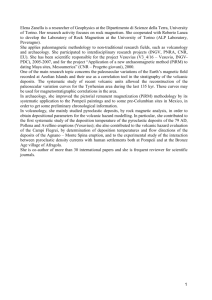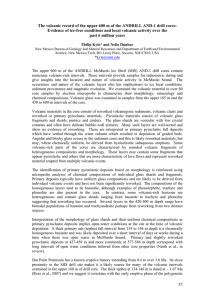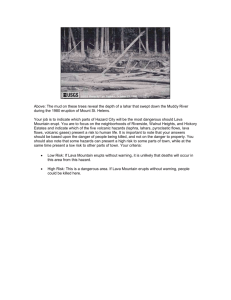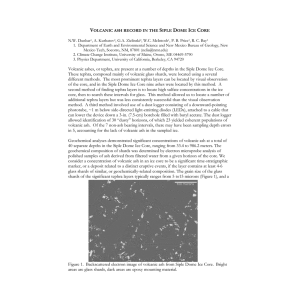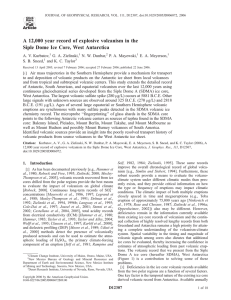PO5.12 The Quaternary volcanic record in the ANDRILL McMurdo Ice Shelf AND‐1B drill core
advertisement
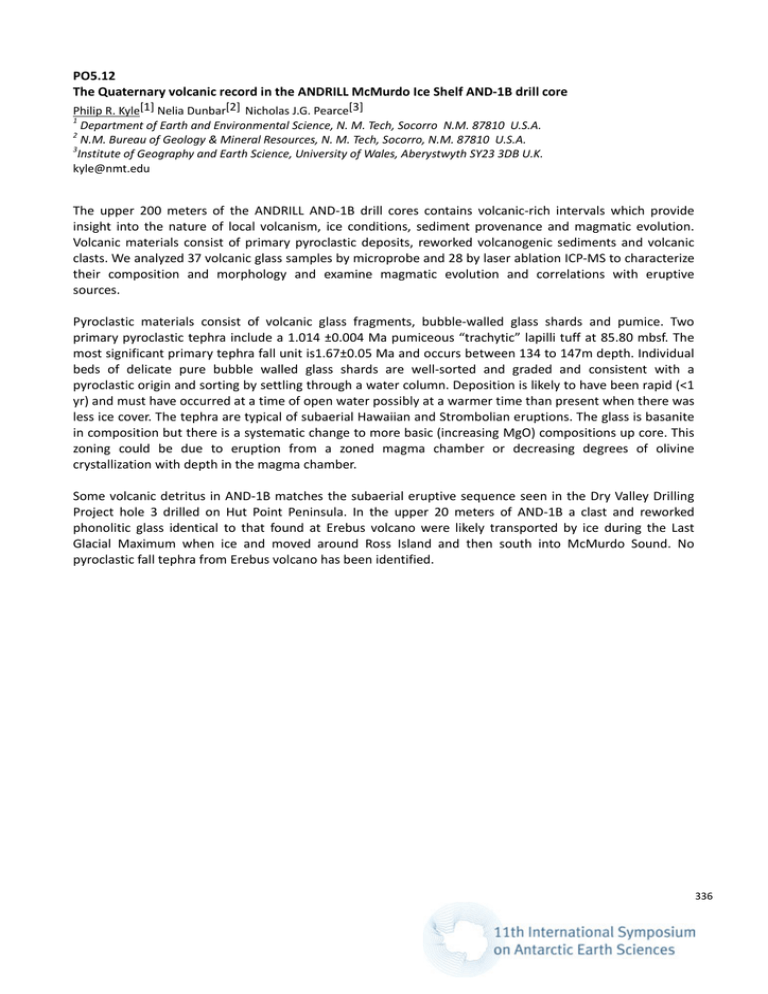
PO5.12 The Quaternary volcanic record in the ANDRILL McMurdo Ice Shelf AND‐1B drill core Philip R. Kyle[1] Nelia Dunbar[2] Nicholas J.G. Pearce[3] 1 Department of Earth and Environmental Science, N. M. Tech, Socorro N.M. 87810 U.S.A. 2 N.M. Bureau of Geology & Mineral Resources, N. M. Tech, Socorro, N.M. 87810 U.S.A. 3 Institute of Geography and Earth Science, University of Wales, Aberystwyth SY23 3DB U.K. kyle@nmt.edu The upper 200 meters of the ANDRILL AND‐1B drill cores contains volcanic‐rich intervals which provide insight into the nature of local volcanism, ice conditions, sediment provenance and magmatic evolution. Volcanic materials consist of primary pyroclastic deposits, reworked volcanogenic sediments and volcanic clasts. We analyzed 37 volcanic glass samples by microprobe and 28 by laser ablation ICP‐MS to characterize their composition and morphology and examine magmatic evolution and correlations with eruptive sources. Pyroclastic materials consist of volcanic glass fragments, bubble‐walled glass shards and pumice. Two primary pyroclastic tephra include a 1.014 ±0.004 Ma pumiceous “trachytic” lapilli tuff at 85.80 mbsf. The most significant primary tephra fall unit is1.67±0.05 Ma and occurs between 134 to 147m depth. Individual beds of delicate pure bubble walled glass shards are well‐sorted and graded and consistent with a pyroclastic origin and sorting by settling through a water column. Deposition is likely to have been rapid (<1 yr) and must have occurred at a time of open water possibly at a warmer time than present when there was less ice cover. The tephra are typical of subaerial Hawaiian and Strombolian eruptions. The glass is basanite in composition but there is a systematic change to more basic (increasing MgO) compositions up core. This zoning could be due to eruption from a zoned magma chamber or decreasing degrees of olivine crystallization with depth in the magma chamber. Some volcanic detritus in AND‐1B matches the subaerial eruptive sequence seen in the Dry Valley Drilling Project hole 3 drilled on Hut Point Peninsula. In the upper 20 meters of AND‐1B a clast and reworked phonolitic glass identical to that found at Erebus volcano were likely transported by ice during the Last Glacial Maximum when ice and moved around Ross Island and then south into McMurdo Sound. No pyroclastic fall tephra from Erebus volcano has been identified. 336

